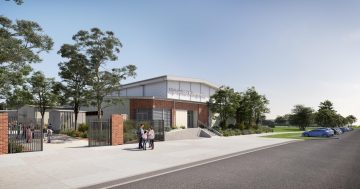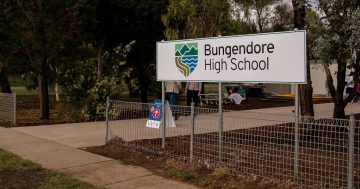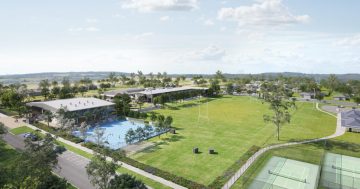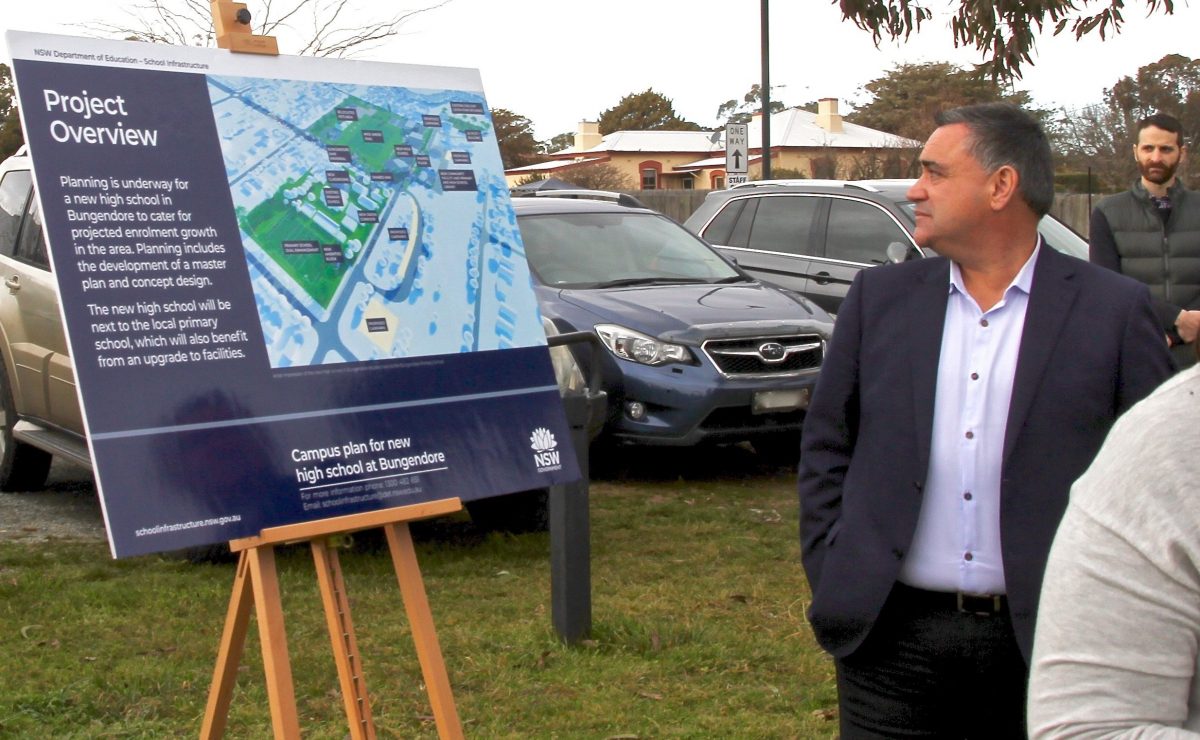
Then-Monaro MP John Barliaro announced the Bungendore High School site in August 2020 – it’s been the subject of controversy ever since. Photo: Michael Weaver.
An independent review has declared that while there were some flaws with the site selection process for Bungendore High School, overall, the Majara location is “superior to the other sites considered”.
School Infrastructure NSW commissioned former NSW public service senior executive and urban planner Dianne Leeson to review the site selection process around the hotly contested permanent high school.
She was to examine whether “appropriate and robust” site selection processes had been adopted and executed, covering the period from late 2018 to when the Majara and Gibraltar Streets Precinct (MGSP) was announced as the chosen location in August 2020.
Her review did not examine the final business case, subsequent formal site acquisition processes for the selected site or concept plan changes.
The review noted an initial search of the NSW Government’s property register had failed to turn up any potential government or council-owned sites that “adequately” met School Infrastructure’s 22 criteria for a site.
A public EOI process was then held to help shortlist a site before any due diligence or detailed site investigations were undertaken.
“The EOI evaluation report rated Tarago Road the better site relative to the others but was itself only rated ‘good’ or ‘adequate’ across the non-price scoring indicators,” the report noted.
“Given the modest rating of the Tarago Road site, the decision by School Infrastructure to concurrently undertake the due diligence process and consider alternative sites that might be more suitable was, in my view, highly appropriate.”
Issues indicating the Tarago Road site wasn’t suitable for the new school included the flood-prone nature of the site, proximity to a waste transfer facility, water availability, lack of accessible utilities, distance from central Bungendore and the primary school, zoning issues, potentially threatened species, and possible need for Commonwealth approvals.
Examination of alternative sites began in March 2020. The MGSP site chosen five months later.
This site met 14 of the 15 essential criteria and three of the six desirable criteria.
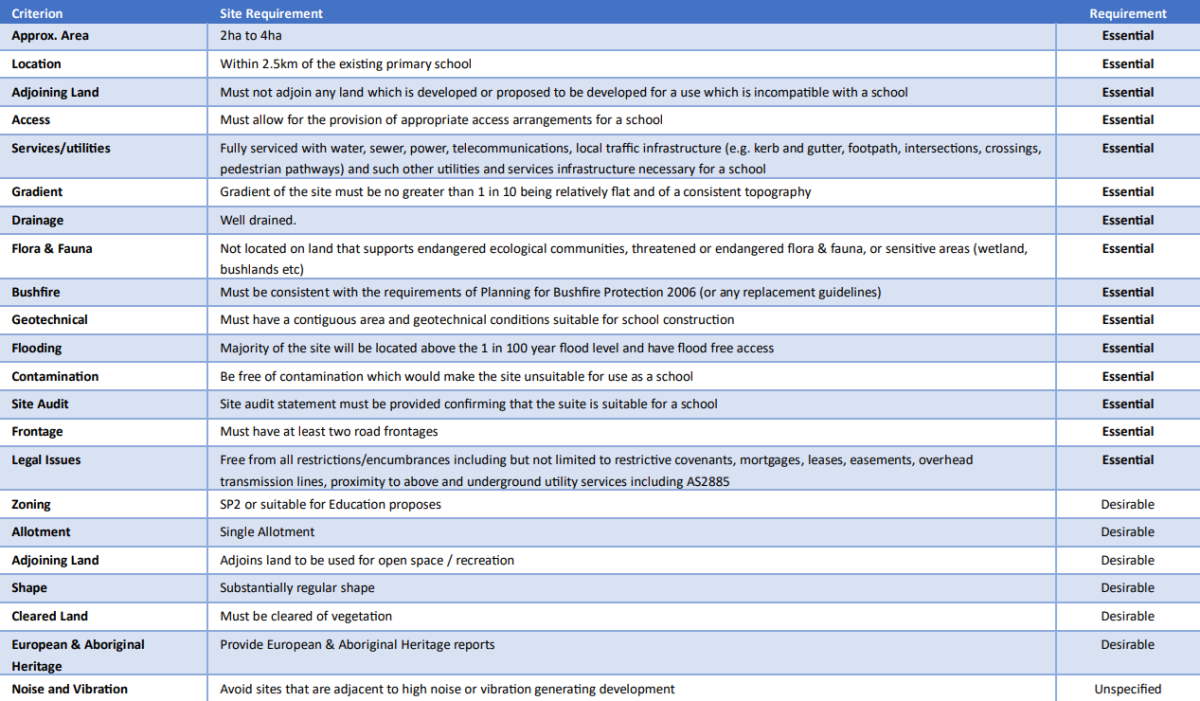
Bungendore High School site selection criteria. Photo: School Infrastructure NSW.
“Significant advantages” of the site included co-location with the primary school, being centrally located, “superior connectivity” for students, and well situated to serve current and future residential subdivisions identified in the Bungendore Structure Plan.
The report noted the criteria that hadn’t been met were “agreed to be minor”: legal issues, single allotment, regular shape and cleared site.
Overall, Ms Leeson found the site selection was “rigorous”, evaluation criteria were established and applied consistently, the expressions of interest (EOI) process had been well managed, consideration of alternative sites was “appropriate”, and the selected site was “significantly superior to all the sites evaluated”.
Her only criticism was around community and key stakeholder engagement, stating there could have been greater transparency and that communication could have been “managed better”.
Ms Leeson noted there was “little documentation” covering the period from mid-March 2020 until the MGSP site announcement.
“The strong community reaction to the announcement and media coverage strongly suggests there had been little or no transparency and engagement with the broader community as due diligence works and discussions/negotiations with Council took place – although it is noted that some consultation had occurred with sporting groups that utilise Sherd Oval,” the report stated.
“This conclusion is supported by the lack of documentation regarding this period.”
Ms Leeson noted that while there might have been commercial-in-confidence matters or other sensitivities, they shouldn’t necessarily “preclude some form of community engagement”.
“This appears to be the only weakness in School Infrastructure’s approach to site selection.”
Save Bungendore Park Inc’s legal action in the NSW Land and Environment found the high school had been planned around an invalid development consent.
In a statement, the group questioned why the review only considered issues up to August 2020 and why only School Infrastructure’s chief executive and current Monaro MP Steve Whan were interviewed as part of the process.
“The report is full of further factual errors and irrelevancies. We could list them but – really, who cares? The mere fact that the author was told to pretend time has stood still since August 2020 says enough,” it stated.
“The fact that the whole plan was illegal from the start? Hey, they didn’t know that in August 2020. Who cares!”












